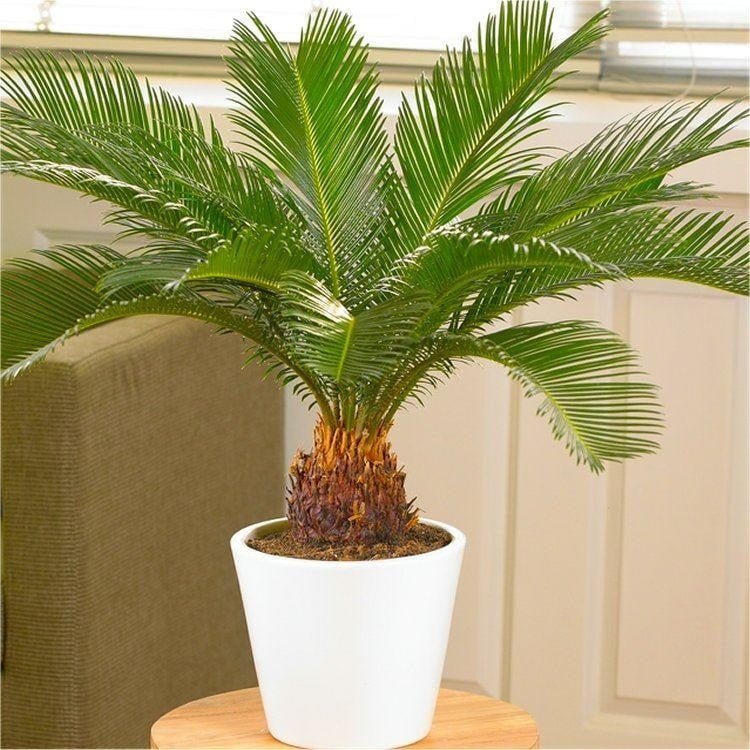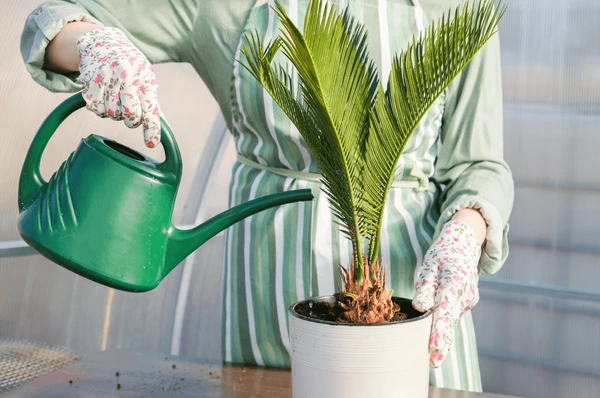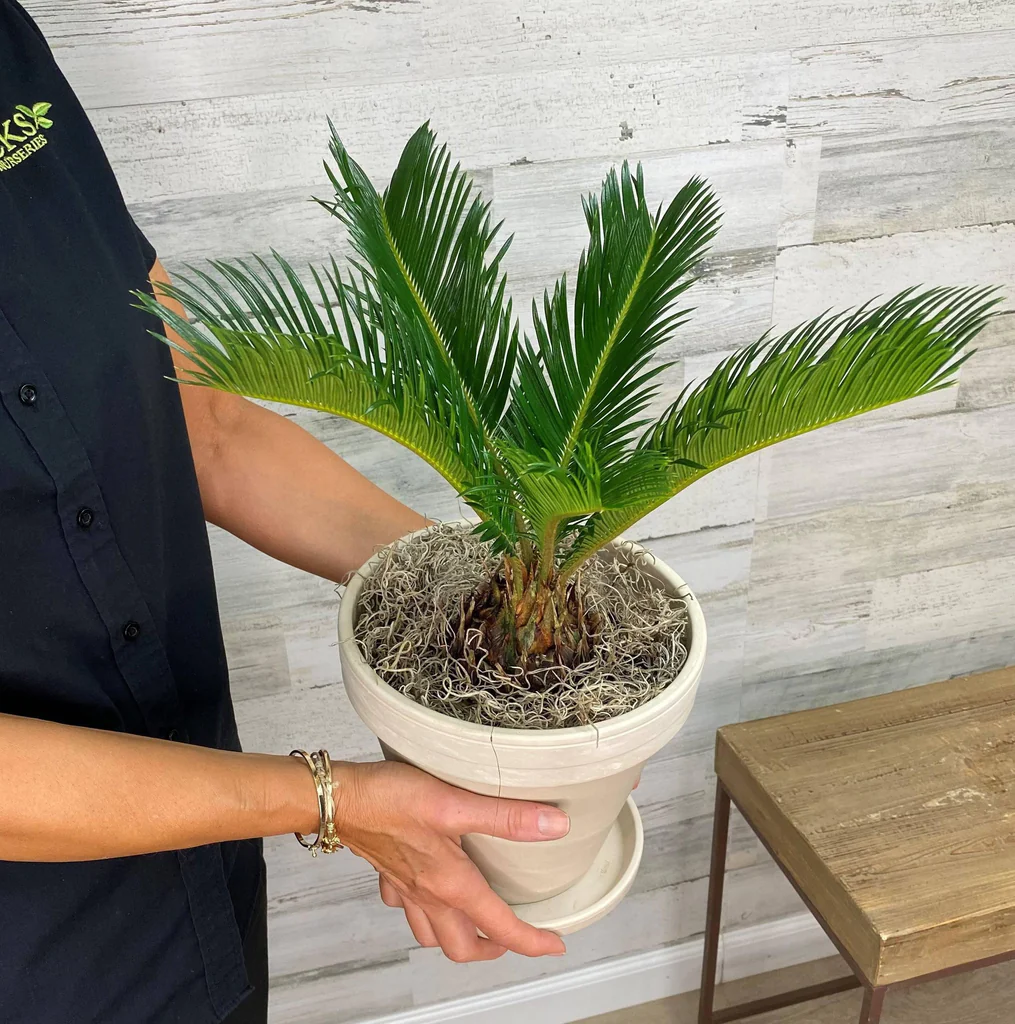Discover the joy of growing the beautiful and low-maintenance sago palm plant in your home or garden. This comprehensive guide offers step-by-step instructions on how to easily care for and cultivate these unique plants, ensuring their lush growth and vibrant appearance.
The sago palm plant, with its distinctive green foliage and striking appearance, has become a popular choice for both indoor and outdoor gardening enthusiasts. Despite its name, the sago palm is not a true palm but rather a type of cycad plant. These plants are known for their hardiness and ability to thrive in various conditions, making them an excellent choice for beginners and experienced gardeners alike. In this guide, we’ll explore the world of sago palm plants and provide you with practical tips on how to grow and care for them successfully.

Understanding the Sago Palm Plant
Sago palm plants belong to the Cycadaceae family and are native to tropical and subtropical regions. They are slow-growing and can live for several decades, eventually reaching heights of up to 10 feet. These plants have a unique and striking appearance, with a thick, sturdy trunk and a crown of stiff, dark green leaves that resemble feathers or fronds.
While sago palms are often grown as ornamental plants for their attractive foliage, it’s important to note that all parts of the plant are toxic if ingested, so it’s best to keep them away from pets and children.
Choosing the Right Sago Palm Variety
There are several varieties of sago palm plants available, each with its own distinct characteristics. Here are some popular options:
King Sago Palm (Cycas revoluta)
This is the most common and widely cultivated variety. It features a thick, sturdy trunk and glossy, dark green leaves.
Queen Sago Palm (Cycas circinalis)
Known for its larger, more open fronds and faster growth rate compared to the King Sago Palm.
Dwarf Sago Palm (Cycas thouarsii)
As the name suggests, this variety stays relatively smaller in size, making it an excellent choice for indoor or patio gardening.
Fern Sago Palm (Cycas rumphii)
This variety has longer, more slender leaves that give it a fern-like appearance.
When selecting a sago palm variety, consider your available space, desired plant size, and personal preferences.
Growing Sago Palm Plants
Sago palm plants are relatively easy to grow and can thrive in both indoor and outdoor environments. Here are some tips for successfully growing sago palms:
Sunlight Requirements
Sago palms prefer bright, indirect sunlight. If grown indoors, place them near a sunny window or use grow lights to provide adequate light. Outdoor plants can tolerate full sun but may benefit from partial shade in hot, dry climates.
Soil and Potting Mix
Sago palms thrive in well-draining soil that is slightly acidic (pH 5.5 to 6.5). A mix of potting soil, perlite or sand, and some peat moss can create an ideal growing medium. Ensure the pot or planting area has adequate drainage holes to prevent waterlogged conditions.
Watering

Sago palms prefer their soil to dry out slightly between waterings. During the growing season (spring and summer), water the plants when the top inch or two of soil feels dry. In winter, reduce watering frequency as the plants go into dormancy. Avoid overwatering, as it can lead to root rot.
Temperature and Humidity
Sago palms thrive in warm temperatures, ideally between 65°F and 90°F (18°C to 32°C). They can tolerate cooler temperatures but may experience slower growth or go dormant. High humidity levels are preferred, but these plants can adapt to average household humidity levels.
Fertilizing

Apply a balanced, slow-release fertilizer in early spring to provide essential nutrients for growth. Follow the product instructions for the correct application rate and frequency.
Pruning and Maintenance
Sago palms generally require minimal pruning. Remove any dead or damaged fronds by cutting them off at the base of the trunk. Avoid cutting into the trunk, as this can damage the plant.
Repotting and Transplanting
Sago palms have slow growth rates and may only need repotting every two to three years. When repotting, choose a container only slightly larger than the previous one, as these plants prefer to be somewhat pot-bound. For outdoor plants, transplant them in early spring or fall, taking care not to damage the root system.
Common Pests and Diseases
Sago palms are generally hardy and resistant to pests and diseases. However, they can be susceptible to scale insects, mealybugs, and spider mites. Regularly inspect your plants and take appropriate measures if pests are detected. Fungal diseases like leaf spot or root rot can occur due to overwatering or poor drainage.
Sago palm plants are a stunning and low-maintenance addition to any home or garden. By following the tips outlined in this guide, you can successfully grow and care for these unique and hardy plants. Remember to provide them with the right growing conditions, and be patient, as sago palms are slow-growing but can reward you with their beautiful foliage for many years to come.
Pingback: Weeping Alaskan Cedar: A Simple Guide to Growing this Beautiful Evergreen Tree -
Pingback: The Best Potted Palm Trees For Outdoors (With Pictures) -
Pingback: The Shingle Plants: A Beginner’s Guide to Caring for Rhaphidophora Hayi and R. Cryptantha
Pingback: All About Crepe Myrtles : Beautiful Southern Flowering Trees - Gardener's School